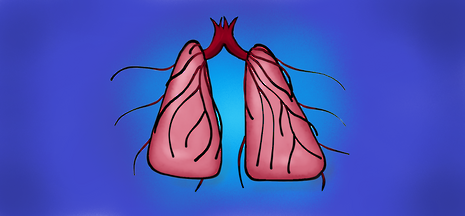Drug-resistant tuberculosis, a small bacterium that could make a big comeback
Tuberculosis cases with single drug resistance are on the rise in the UK, writes Judith Zarebski

If you have lived in the UK for your entire life, chances are you have never really worried about tuberculosis (TB). You probably did not even get vaccinated against it, and mostly heard about it in Crime and Punishment, Jane Eyre or other literary classics. A disease widespread in the UK during the industrial revolution, tuberculosis has now made a slight comeback after years largely absent from the news.
So what is it? From the moment Mycobacterium tuberculosis gets inside the lungs, it invades the macrophages and hijacks them to hide from the rest of the immune system. Once it has proliferated enough or the immune system has been compromised, it comes out of hiding. It then leads to a wide array of symptoms; chronic cough, night sweats and weight loss are the most well-known, but can also infect many other organs. Tuberculosis is a very prevalent disease in low and middle income countries, registering 95% of active cases. There are several reasons for this. Overcrowding, problems with sanitation and poor ventilation, as is often the case in poorer areas, greatly increase the risk of transmitting the bacteria. Once the bacterium is inhaled, resulting malnutrition and a weakened immune system make it harder for the body to fight the bacteria.
However, these issues are far less significant in the UK. Why be worried about these new cases of tuberculosis in the UK? After all, the UK management of TB involves a six-month multidrug regimen, proven to be very efficient, for citizens that have contracted it, for instance, on holidays in at-risk countries. The answer is a four-letter acronym: DR-TB, or drug-resistant tuberculosis. The term DR-TB encompasses many types of M. tuberculosis strains that have developed immunity to the drugs used to treat it. This can be due to several factors, such as a treatment given for the wrong length of time, poor quality of the drug given, or the early termination of the treatment by the patient. The bacteria are therefore not eradicated and can develop resistance to the treatment if it were to be administered again. These strains are now present in the UK, with dozens of cases as of 2019. Managing drug-resistant tuberculosis is far more complex and requires a team of professionals to monitor and manage the infection, to prevent it from becoming even more resistant.
The new treatment now takes between nine and 20 months. This intensive regimen is far less effective than the usual one, with only 35% of patients responding positively to the treatment. The remaining 65% either stop the treatment, do not respond to it, or die. What can be done to prevent it? The NHS offers vaccines to healthcare professionals and individuals likely to come in contact with someone from a country where tuberculosis is prevalent. However, this vaccine against tuberculosis is far from truly effective. It reduces the risk of infection by just 20%, far from the impact of other common vaccines, such as the MMR vaccine, which is found to be 97% effective against rubella. This is due to a late response by the immune system, around 12 days, which gives plenty of time for the bacteria to spread and avoid total destruction by the immune system. Due to the nature of the bacterium, designing a more successful vaccine appears to be complicated, and scientists have focused mostly on developing new drugs to cure existing cases of tuberculosis instead of trying to prevent it.
Several researchers at the University of Cambridge are currently involved in drug discovery, and the University seems on the right track to find a new drug targeting M. tuberculosis. However, despite the creation of innovative drugs, tuberculosis is still a pandemic with fateful consequences. The bacterium is becoming resistant to new drugs, and the creation of further new drugs is merely a band-aid on a very serious issue. The best solution would be to fully monitor the treatment in patients suffering from tuberculosis and make sure that they follow the treatment to completion, in order to prevent the development of drug resistance by the bacterium. On a larger scale, informing populations about the importance of finishing the treatment might be the most cost-effective solution to ensure that the disease exists only in memory, and in the pages of our literary classics.
 Features / The community Cambridge accommodation creates (and doesn’t)9 August 2025
Features / The community Cambridge accommodation creates (and doesn’t)9 August 2025 Comment / Are degrees still worth it?4 August 2025
Comment / Are degrees still worth it?4 August 2025 Sport / ‘A full-time job with overtime’: should disparities change the way we approach Bumps?6 August 2025
Sport / ‘A full-time job with overtime’: should disparities change the way we approach Bumps?6 August 2025 Lifestyle / An ode to college accommodation11 August 2025
Lifestyle / An ode to college accommodation11 August 2025 News / News in Brief: Streets, suns, and TV stars10 August 2025
News / News in Brief: Streets, suns, and TV stars10 August 2025










